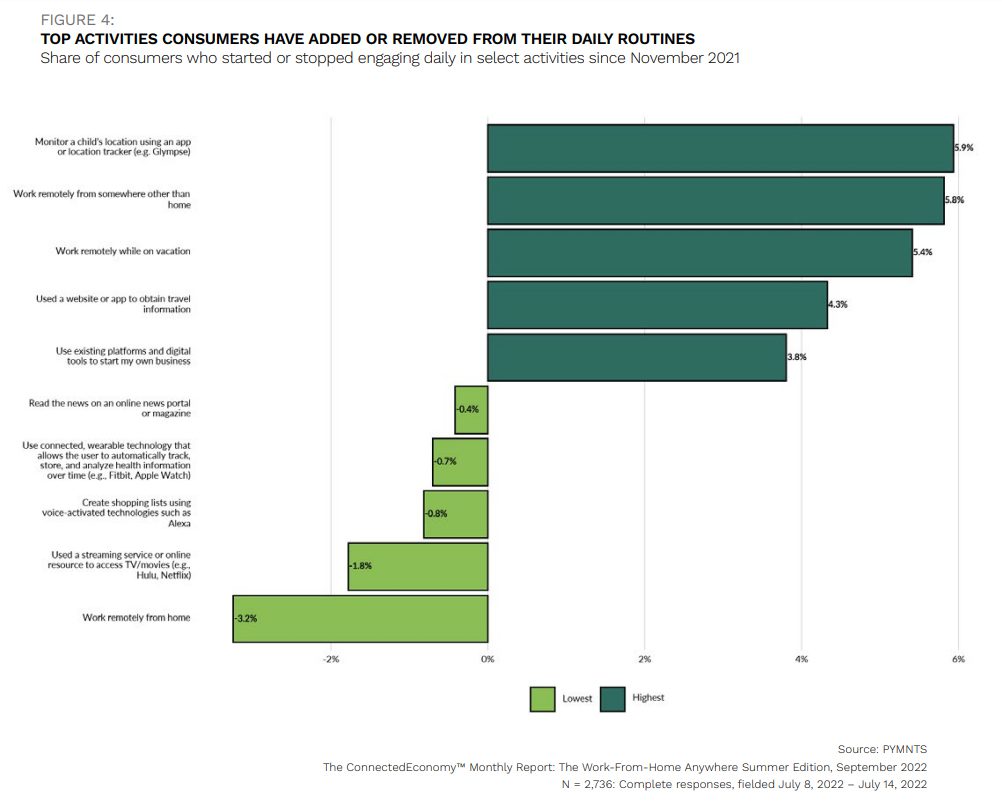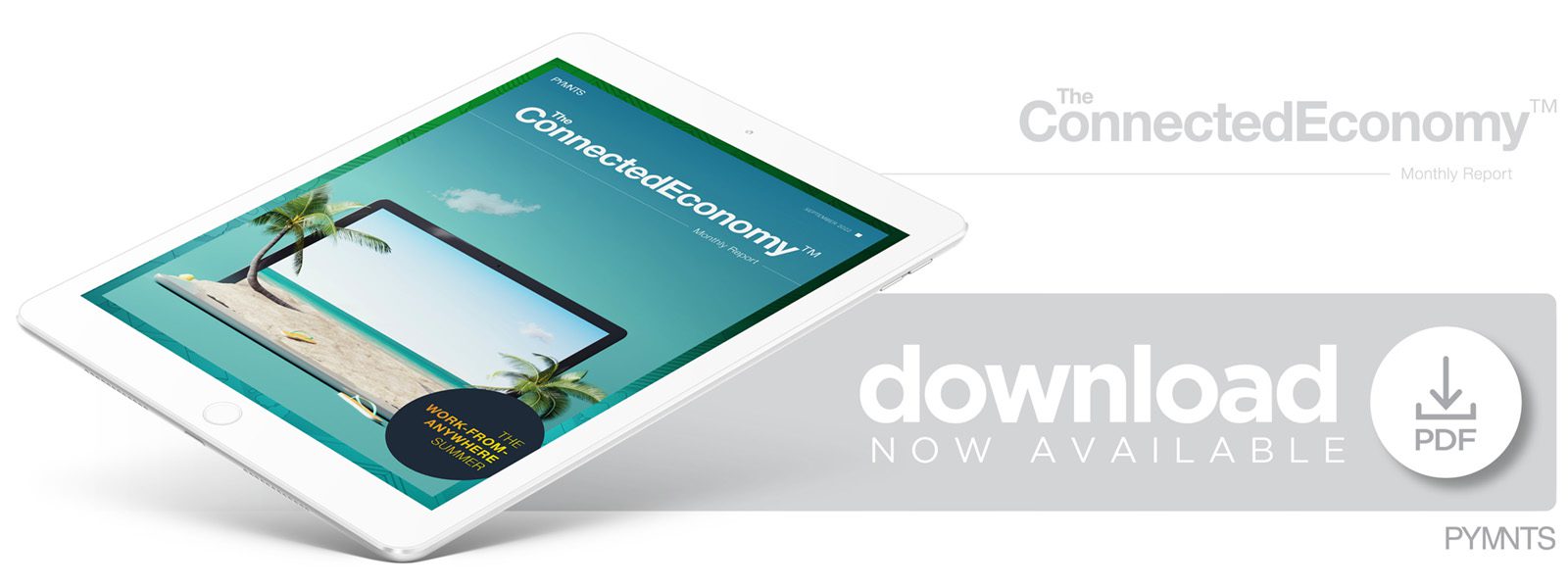Remote Workers’ Changing Preferences Influence CFO Policies

One of the top macro issues that consistently emerges in PYMNTS discussions with CFOs is the challenge of recruiting and retaining top talent. Data from the September edition of The Connected Economy™ Monthly Report sheds light on the state of the contemporary workforce that can help them keep pace with changing worker preferences.
Get the report: The ConnectedEconomy™ Monthly Report: The Work-From-Anywhere Summer | PYMNTS.com
As the summer months rolled on, workers went out of their way to find places to work outside their homes. Three of the top five digital activities in which we have seen the greatest increase in engagement since November 2021 all pertain to working online.

It’s added more than a few interesting wrinkles to the work of chief financial officers (CFOs), who already have a lot on their plates when it comes to handling technology and data. Long-term financial planning now needs to take into account investment in tools and strategies to help their businesses retain talent in a work-from-anywhere world.
“That’s one of the things that we continue to spend a lot of time on,” David Rockvam, CFO at Riskonnect, told PYMNTS, adding that the company has kept its employee churn quite a bit below that industry benchmark. “If you lose somebody and have to replace them, that’s a lot of work on the organization.”
Thirteen million more workers either worked remotely from outside their homes, worked on vacation or built their own businesses online than were doing so nine months ago, the study noted. At the same time, 7 million fewer were working from home. These results indicate that workers are indeed returning to the office. But many of those are in hybrid situations where workers only spend a few days per week in the office.
Finance Fosters Connections
Given those realities, Rockvam and several other CFOs told PYMNTS that they also play a key role in facilitating engagement and connected communication, not only within the finance team but across the organization. Though they work in different verticals, they identified several common threads:
Boosting buy-in. With today’s remote workforces, it can be a challenge to facilitate an entirely digital hiring and new employee onboarding process, and to foster a collaborative environment among current employees, Vacasa CFO Jamie Cohen said.
“I think that finance can often be that communication hub between departments, where finance is talking to sales, or talking to operations, making sure they’re also talking to one another about initiatives,” Cohen said.
See more: Vacasa CFO Talks Modernizing Finance Through Collaboration
Automating away challenges. Coalfire CFO Dennis Schumacher told PYMNTS that automation could free employees to focus on adding value to the business rather than spending time doing busy work. What’s more, it helps with employee retention by enabling the company to keep them engaged and doing challenging work rather than manual work.
“That value prop is very important to us externally, but we have to do it for our resources as well so that we can maintain high-caliber resources, both client-facing as well as in the back office,” Schumacher said.
Watch the video: Growing a Company Means Looking Beyond the Books
Building inclusion. Riskonnect has kept its employee churn below the industry benchmark of 20% to 22% employee turnover, Rockvam said.
“I think we’re doing a good job of helping our team members get acclimated with the work from home and building a culture that is very inclusive,” Rockvam said.
Read more: Engagement Key to Taming ‘Great Resignation’ of Finance Teams

